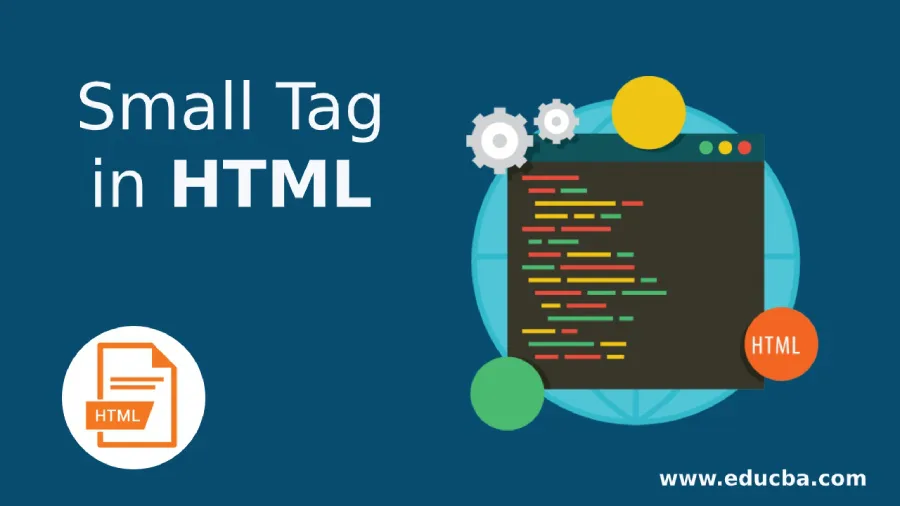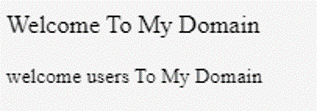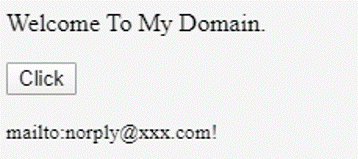
Introduction to Small Tag in HTML
The <small> tag is one of the features in HTML mainly; it represents the text identified and displayed from one size into another size that is big to small size HTML body text will be converted largely into small. The tag will focus on the HTML its not undercover whole user browser font sizes. It will support all type of browsers, so it is fully accepted the browser compatibility modes.<small> tag is an HTML element the web page content will change the smaller size, and there are no changes in the text on the web pages.
Syntax:
The basic syntax of the <small> tag as follows.
<html>
<body>
<p>
<small>
----some contents---
</small>
</p>
</body>
</html>
The above codes are the basic steps to declare the <small> tag in HTML documents. We must use both opening and closing brackets for the <small> tag. In each HTML tags have their own features and some de-merits to the projects based on the versions, runnable environments, etc. these features are acceptable for all the HTML tags.<small> tag is used for all the places in HTML tags; they use nested concepts to derive the HTML web contents in sub-division parts.
How does Small Tag work in HTML?
HTML small tags do not have any specific attributes support for HTML web pages; it is a global one that will support all over the web page contents in the browser screen. By using a small tag, the size of the fonts must vary; that is a small font for some various needs its have an expectation also it includes styles. In html5 is gained some new purposes for web page users. But it is common for the HTML small text inside comments and some fine prints also; it often includes some legal text or copyright information.
In body tag in a web page, all the contents of the text will be the same size that is often as normal, but there are sometimes certain parts of the copied text that will be a smaller size visually it will be broken one that the text is split and make it as a readable format in web pages. The<small> tag is one way to format the text, and CSS with some other tags has reduced the importance of this tag. The small tag was one of the good tags when we used it properly, and also, it will be used multiple times on web pages and can be nested with inside other tags for some effects.
We will add to possible for styles and added some functionalities to the <small> tags; this is nothing but adding an attribute with after the small in the opening tag. It includes attributes for class directories, id, languages, styles, and titles. In most of the cases class, ids are used with the web pages and its usages as line as <small id=” sample”>examples</small> with all the attributes there is have some spaces after the initial with the attribute names than an equal sign, identifiers of the attributes in double-quotes. Both the class and ids types are the attributes it refers to the CSS stylings of the elements, and it will be either stored in <head> tag of the web page documents on an external file.
An id refers to denote the single instance of the web page whereas classes usually it refers to some repeating elements on the page it is mainly for the reasons for <small> tag the class attributes is nearly always used over the id attributes because in practice, type it does not make many differences in the web page. The attributes are always allowed with some CSS styles pieces of information for the <small> tag in HTML. The directory dir attribute is allowed for reading the HTML text in both left and right format language lang. It is allowed to specified the languages for both tag and title contents. It is used to allow some extra contents and information for the tags.
It is mainly possible to attach the scripts like javascript to use the HTML tags and also as well as add some functionalities to the web pages based on the user requirements those scripts in HTML will write for the outside scope of the document.The <small> tag is an inline element in HTML. We use the <small> tag to define the alter text size in the web pages if suppose the page is written in HTML5 versions, the mentioned altering text tag size issue is to be ignored on the case. Popular Course in this categoryHTML Training (12 Courses, 19+ Projects, 4 Quizzes)12 Online Courses | 19 Hands-on Projects | 89+ Hours | Verifiable Certificate of Completion | Lifetime Access | | 4 Quizzes with Solutions
4.5 (6,502 ratings)Course Price
₹6999 ₹41999
View Course
Related CoursesBootstrap Training (2 Courses, 6+ Projects)XML Training (5 Courses, 6+ Projects)CSS Training (9 Courses, 9+ Projects)
Examples
The examples of the following are given below:
Example #1
Code:
<html>
<body>
<p>Welcome To My Domain</p>
<p><small>welcome users To My Domain</small></p>
</body>
</html>
Output:

Example #2
Code:
<html>
<head>
<style>
sample {
font-size: .8em;
color:blue;
}
</style>
</head>
<body>
<p>Welcome To My Domain,All the New Users welcomed once again</p>
<sample> Please contact any queries to email:norply@xxx.com </sample>
</body>
</html>
Output:

Example #3
Code:
<html>
<body>
<p>Welcome To My Domain.</p>
<button onclick="sample()">Click</button>
<p id="example1"></p>
<script>
function sample() {
var s = "mailto:norply@xxx.com!";
var r = s.small();
document.getElementById("example1").innerHTML = r;
}
</script>
</body>
</html>
Output:

The above three examples will show the basic <small> tag HTML with different formats in web pages. Based on the project’s user requirements, we will use the small tag and attributes in real-time environments. And also, we used javascript for the third example; after clicking the button, the mail address will be shown in a smaller size, so this will vary when compared to the previous two examples Event handler mechanism will use the HTML contents attributes enable to invoke the scripts from within the HTML documents. The script is invoked and occurs in certain events when we call the functions in the front end screen to the back end. Each event handler mechanism contains certain attributes to deal with the set of events in HTML scripts.
Conclusion
Mainly in HTML, we use the <small> tag has one feature for touching the surface of the HTML predefined tags. Mainly it will use the versatile in HTML tags easily among other tags. It will combine with CSS to present with more attractive for the web pages in users.
Recommended Articles
This is a guide to Small Tag in HTML. Here we discuss the Introduction and how does Small Tag work in HTML, along with respective examples and outputs. You can also go through our other related articles to learn more–
